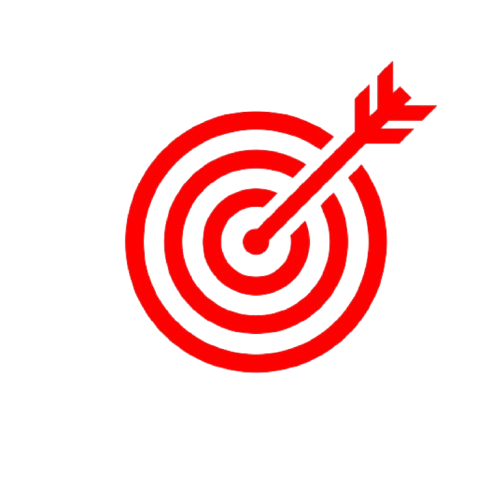Archery is an ancient sport with modern-day appeal, offering everything from recreational fun to Olympic competition. Whether you’re new to the sport or looking to upgrade your gear, understanding the different types of archery bows is essential. Each bow has its own advantages, suited for specific uses such as hunting, target shooting, or field archery.
In this article, we’ll explore the main types of archery bows, their features, pros and cons, and the best use cases for each.
There are many types of Archery bows on the market today. Among them, the most popular and widely used include:
- Recurve Bow
- Compound Bow
- Longbow
- Crossbow
- Fiberglass Bow
Let’s explore each types of Archery bows in detail, along with their benefits, ideal users, and what makes them unique.
1. Recurve Bow
Overview:
The recurve bow is the most popular and widely recognized types of Archery bow, especially in target archery and the Olympics. It’s called “recurve” because the tips of the limbs curve away from the archer, giving the bow more power and speed.
Best For:
- Beginners
- Target shooting
- Olympic-style competitions
Pros:
- Lightweight and simple design
- Easy to find replacement parts
- Great for learning form and technique
Cons:
- Requires more physical strength compared to compound bows
- No mechanical assistance
2. Compound Bow
Overview:
A compound bow uses a system of pulleys and cables to make drawing the string easier and more efficient. This modern design allows archers to hold a drawn bow for longer with less strain, thanks to something called “let-off.”
Best For:
- Hunting
- Competitive archery
- Precision shooting
Pros:
- High accuracy and power
- Adjustable draw weights
- Easier to aim for extended periods
Cons:
- Heavier and more complex
- Requires tuning and maintenance
Variants:
- Target Compound Bows – Larger, heavier, with vibrant colors and magnifying lenses
- Hunting Compound Bows – Compact, rugged, and often camouflaged
Note: Compound bows are also excellent for beginners due to their forgiving learning curve and quick skill improvement.
3. Longbow
Overview:
Longbows are the most traditional archery bows, typically made from a single piece of wood. They have a straight limb design without the curved tips found in modern bows.
Best For:
- Traditional archery enthusiasts
- Historical archery events
- Field shooting and instinctive archery
Pros:
- Elegant, simple design
- Quiet and smooth release
- Ideal for traditional archery experiences
Cons:
- No sights or advanced features
- Requires skill and practice
- Less powerful than compound or recurve bows
There are many types of longbows around the world, including Japanese longbows, which are exceptionally long to allow for longer, smoother draws with minimal effort.
4. Crossbow
Overview:
Crossbows resemble a horizontal bow mounted on a frame, complete with a trigger mechanism. They fire bolts rather than traditional arrows and often resemble firearms in function and power.
Best For:
- Hunting
- Tactical sports
- Individuals with physical limitations
Pros:
- High accuracy with minimal effort
- Powerful and easy to aim
- Great for those who struggle with traditional bow draw weights
Cons:
- Often regulated and may require a license
- Slower to reload
- Lacks the traditional feel of archery
Tip: If you want easier accuracy but less traditional experience, a recurve crossbow is a great option and very popular types of Archery bow
4. Fiberglass Bow (Youth Bows)
Overview:
Fiberglass bows are typically labeled as “youth bows” and are often the first bows many beginners encounter. These bows are ultra-affordable, with full sets sometimes costing under $50.
Best For:
- Young children
- First-time learners
- Casual backyard practice
Pros:
- Very cheap and accessible
- Lightweight for kids
- Easy to handle
Cons:
- Limited accuracy and power
- Outgrown quickly
- Not suitable for skill development
Note: While they are tempting for entry-level use, fiberglass bows offer very limited progression and are more toy-like than profes
How to Choose the Right Bow for You
When deciding among the different types of archery bows, consider the following:
- Purpose: Are you hunting, target shooting, or practicing traditional archery?
- Experience Level: Beginners may prefer recurve or compound bows.
- Budget: Prices vary widely—compound and crossbows tend to cost more.
- Maintenance: Simpler bows like longbows need less upkeep.
Each type of bow serves a different purpose and suits a different kind of archer. Here’s a quick breakdown:
| Bow Type | Best For | Experience Level |
|---|---|---|
| Fiberglass Bow | Kids and first-timers | Beginner |
| Crossbow | Hunters or those needing assistance | All levels (regulated) |
| Longbow | Traditional shooters | Intermediate–Advanced |
| Compound Bow | Precision and speed | Beginner–Pro |
| Recurve Bow | Learning and competitions | Beginner–Pro |
Before making a purchase, consider your purpose (hunting, competition, practice), budget, and desired features. Try different types if possible and consult with your local archery shop or coach.
Do You Want to Explore More?
If you’re serious about learning archery or buying your first bow, check out our in-depth guides and reviews on:
- Best Beginner Recurve Bows
- Top Compound Bows for Hunting
- Olympic Archery Equipment for Starters
Final Thoughts
Understanding the types of archery bows helps you make informed decisions and enjoy the sport more fully. Whether you lean toward a modern compound bow or a classic longbow, there’s a perfect match for your goals and skill level. Try different types, consult professionals, and most importantly—enjoy the journey of becoming a better archer.

Leave a Reply